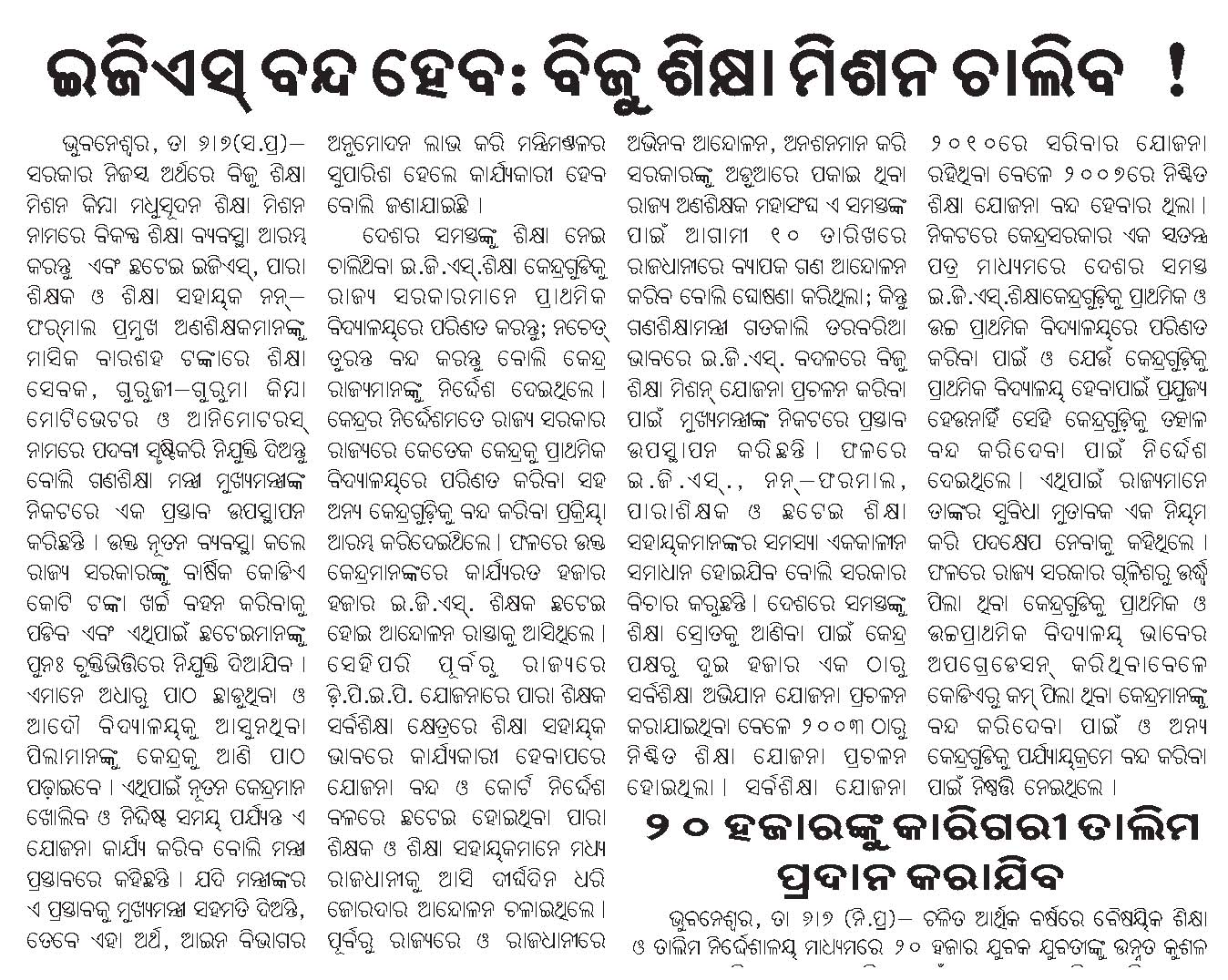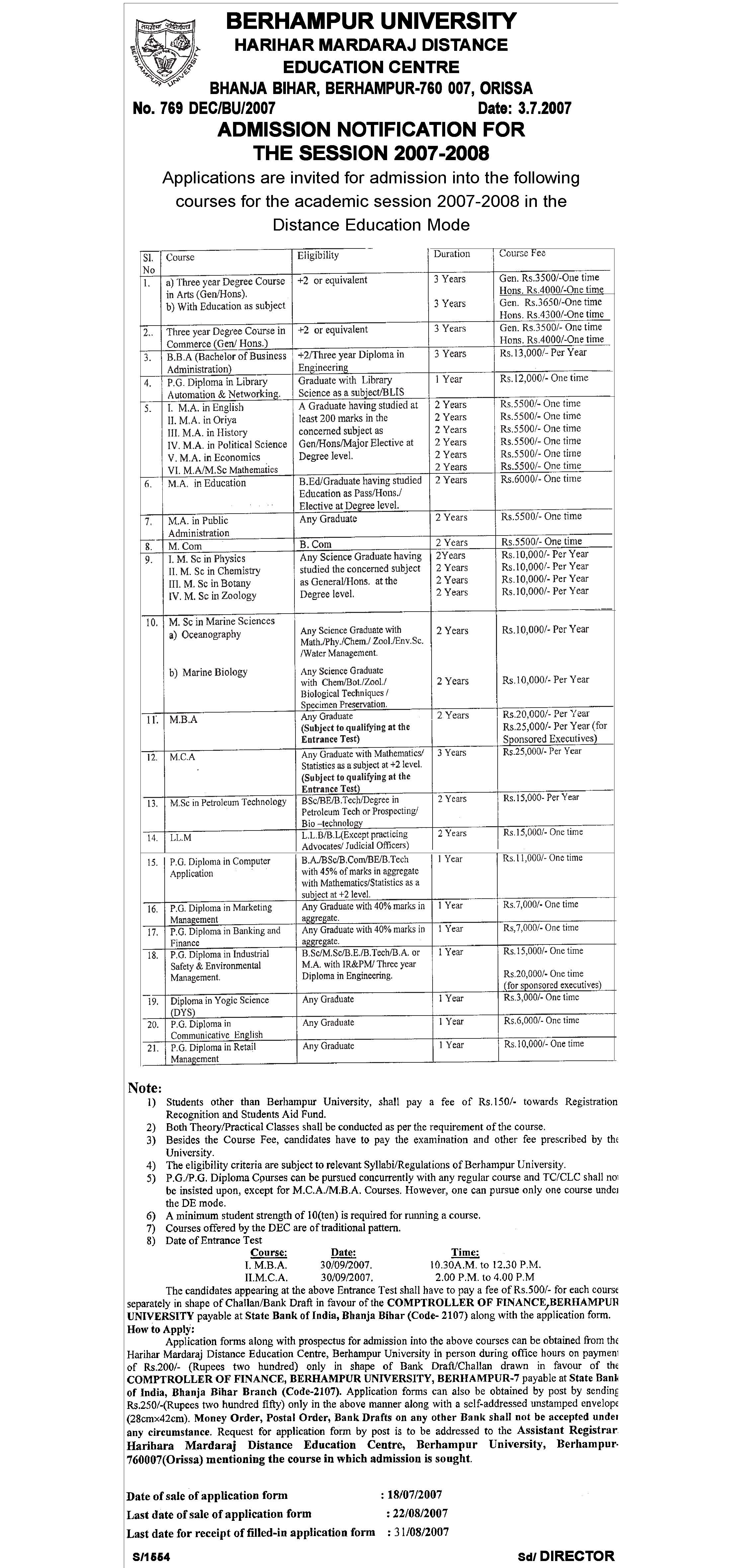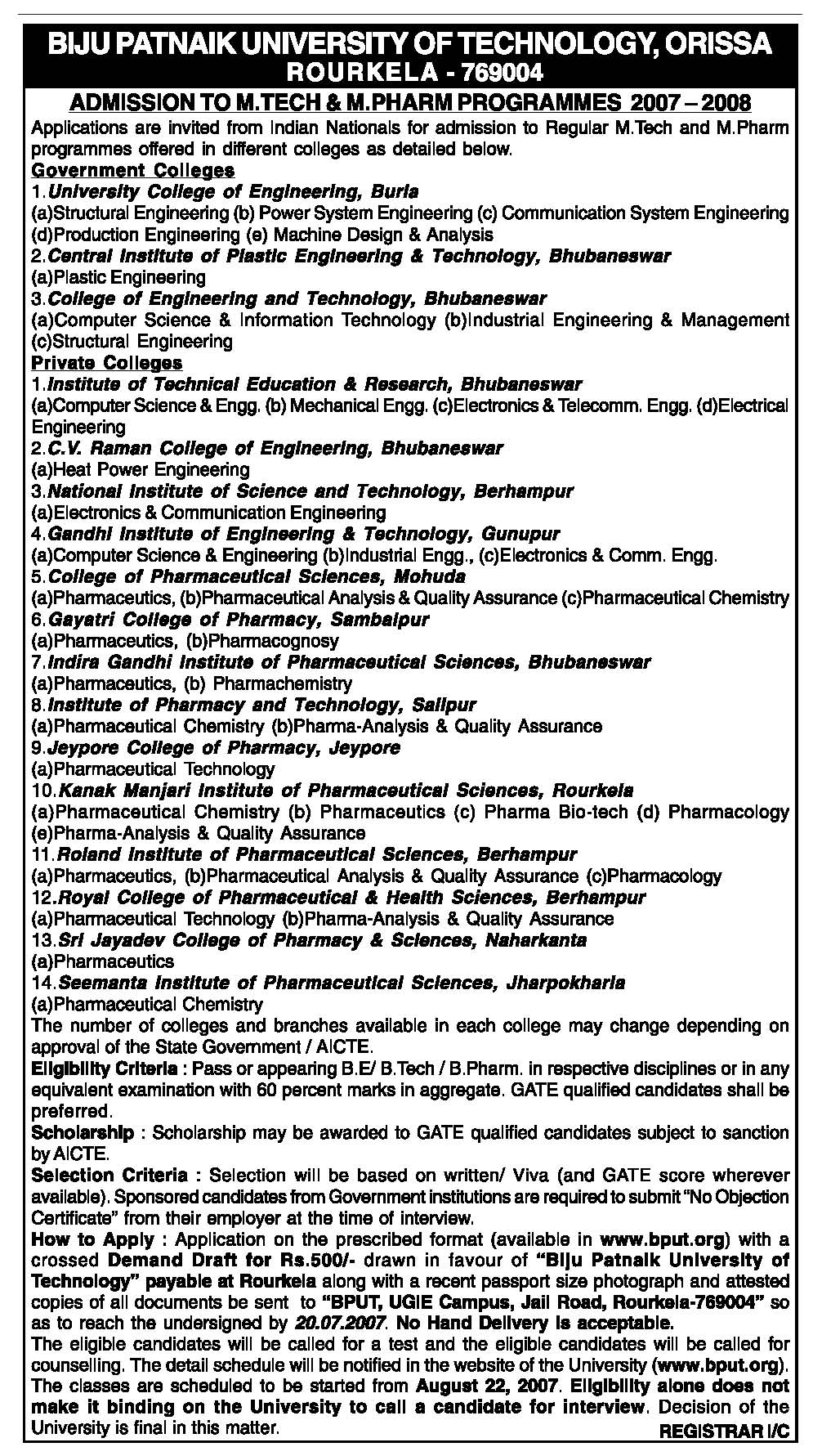Following are excerpts on this topic from a Business standard report:
The government has allocated Rs 1,920 crore for setting up 16 central universities in states which do not have one so far . The plan was announced by Prime Minister Manmohan Singh recently.
Once these universities are in place, the government plans to have two central universities in each state.
“The government has set aside Rs 1,920 crore for setting up 16 central universities in 16 states that lack such varsities till now,” an official in the Ministry of Human Resource Development told Business Standard.
The allocation would take care of non-recurring costs like infrastructure and recurring costs like salaries and other yearly expenditures throughout the Eleventh Plan period.
“While Rs 60 crore is the non-recurring cost to set up a varsity, an yearly amount of Rs 12 crore would be made available for five years to take care of the recurring costs of a university,” the source said.
While estimates point that setting up one full-fledged central university costs around Rs 400 crore, the ministry expects the amount of Rs 120 crore to take care of the initial expenses like the construction of buildings and staff salaries. Since the state governments are expected to provide the required land, the amount is being considered sufficient for now. …
The source said that once the 16 universities were in place, the government would go ahead to set up two central universities in every state. There are 20 central universities in the country at present.
July 7th, 2007
This PIB article mentioned plans for establishing new central universities. Hindustan Times has a news report elaborating on various aspects of the new central universities. Following are some excerpts:
A common entrance admission test for all Central universities, a uniform semester and credit system to allow easy mobility for students may come into force. …
“The common national entrance test for 30 Central Universities, including 14 new ones to be set up, to ensure top quality student intake, would be the same as the JNU test, which is well regarded and has been accepted,” a senior government official said.
JNU governance model of complete autonomy will also be adopted in all universities to check “political interference” in the appointment of vice-chancellors and faculty, the official added.
The semester system would also be similar to that of JNU’s, with a facility for a student to break away for a year or two and return, if he or she wishes.
All new 14 Central universities will have an engineering school, a management school and a law school, but would be allowed to charge higher fees than the conventional courses, the presentation states.
The presentation also recommends increasing the fee for undergraduate courses to Rs 12,000 per annum with 40 per cent of students getting substantial scholarships.
“The fee structure should cover 20 per cent of the cost for running the university,” the official said. The government also wants to set up a Central government loan guarantee mechanism, which will cover 75 per cent of the loan amount in case of default by students obtaining loans from the banks.
The underlined sentence above says 14 new central universities, while the PM’s address had said 30 central universities. Perhaps it may mean that there will be 14 new central universities while 16 will be upgradations. If that is the case and indeed the new central universities have an engineering school, a management school and a law school, then all these will most likely would be part of the earlier mentioned central university in Koraput. That would be really great.
July 6th, 2007
India can not progress much if it leaves behind big parts of its population and areas; same is true for Orissa. Unfortunately the most backward areas of India also happen to be in Orissa. We must make sure that these areas are given adequate attention by all governments.
1. Some statistical points on KBK, the most backward districts in Orissa as well as India; on Orissa and on MHRD spending in Orissa.
(a) Population below the poverty line in southern Orissa (of which KBK is a part) is reported to be 89.17% of the people according to the 1999-2000 NSS data and 72% of the families according to the 1997 census.
(b) The literacy rates in the KBK districts are abysmally low. Malkangiri 31.26%, Nabarangpur 34.26%, Rayagada 35.61%, Koraput 36.2%, Nuapada 42.29%, Kalahandi 46.2%, Balangir 54.93%, Sonepur 64.07%. Two adjacent districts also have low literacy: Gajapati 41.73% and Kandhamala 52.95%. The state average is 63.1%.
(c) The tribal population percentage of the KBK districts are as follows: Malkangiri 58.36% (+19.96% SC), Rayagada 56.04% (+14.28% SC), Nabarangpur 55.27% (+15.09% SC), Koraput 50.67% (+13.41% SC), Nuapada 35.95% (+13.09% SC), Kalahandi 28.88% (+17.01% SC), Sonepur 22.11% (+9.5% SC), Balangir 22.06% (+15.39% SC). Two adjacent districts also have high tribal population. They are Kandhamala 51.51% (+18.21% SC) and Gajapati 47.88% (+8.77% SC)
(d) KBK needs sons of the soil, (highly) educated in the soil teachers, doctors, engineers, officers etc. to help in bringing KBK to the main stream of Orissa and India. With a high tribal population, it is important that they have higher education opportunities right where they live as often they do not venture out to Delhi, Hyderabad, Allahabad or Benaras to take advantage of the ST seats in the high quality central universities there and the ones that venture out do not usually return home. In this regard one must note that in the US a major percentage of Blacks, Hispanics and Native Americans who have a higher education degree have it from colleges and universities (such as HBCUs — Historically Black Colleges and Universities) near their home rather than in far flung universities.
(e) Central government spending in fully centrally funded higher education institutions in Orissa is towards the bottom among all states in India. A rough calculation in http://www.baral.us/hrd-nh.htm showed that while the central government spent (in 2005-06) per person Rs 4.07 on fully-funded-by-center HRD institution in Orissa, it spent Rs 177.12 in Delhi, Rs 105.42 in Uttaranchal, Rs 105 in Arunachal Pradesh, Rs 77.7 in Assam, Rs 33.78 in Himachal Pradesh, Rs 28.10 in West Bengal, Rs 25.12 in Karnataka, Rs 17.79 in Tamil Nadu, Rs 17.09 in Maharastra, Rs 17.08 in UP, Rs 16.2 in Jharkhand, Rs 16.05 in Andhra, Rs 14.5 in J & K, Rs 13.38 in Punjab, Rs 8.52 in Haryana, Rs 7.9 in Kerala, Rs 7.39 in Chhattisgarh, Rs 7.2 in MP, Rs 4.87 in Gujurat, Rs 2.59 in Rajasthan, and Rs 1.87 in Bihar. Now that an IIT and IIM has been announced for Bihar and an IIT has been announced for Rajasthan, Orissa will be at the bottom.
(f) As per the NSSO study of 2004-2005 Orissa is at the bottom of most higher education parameters. For example, Table 3.14.1 shows that in the 15-19 age group 29% people in Orissa are attending school/college and in the 20-24 age group this number for Orissa is 6.1%. (Both numbers are lowest among all but the small states/UTs of Dadra and Nagar Haveli, Daman & Diu and Lakshadweep.) For the Scheduled Tribe population
these numbers are 17.1% for the 15-19 age group and 4.1% for the 20-24 age group.
2. Orissa government and people have made sincere efforts towards establishing a KBK central university.
(a) Oct 24 2005: The CM meets the HRD minister Mr. Arjun Singh and proposes the idea of a KBK Central University and Mr. Singh appreciates the idea. Following is an excerpt of a press release that discusses it.
- … In addition to this, Shri Patnaik also requested for establishment of a Central University for the KBK Region, which is one of the most backward regions in the country. He pointed out that there was a heavy concentration of the scheduled tribe and scheduled caste population in this region, which has a literacy rate below 50%. Shri Patnaik stated that setting up a Central University in the KBK region would go a long way in encouraging higher education among tribal population. He added that the university could also set up specialized centres for tribal development related studies, as tribal development was one of the biggest challenges facing the country today. Shri. Arjun Singh appreciated the rationale of having a Central University in the KBK region and sought a formal proposal in this regard from the State Government. He assured that this would receive high priority whenever the Central Government considers setting up of new central universities
(b) Since then the Orissa government and the representatives of Orissa have brought up this issue many many times.
(c) A detailed proposal was sent by the Orissa government as well as by us.
(d) Here is our proposal. (word, pdf) This document has lots of detailed statistics in case you may want to use some of it in your letter.
(e) Hundred of us also sent letters about it to the PM, planning commission, etc. (word) This letter also has lots of detailed statistics in case you may want to use some of it in your letter.
3. A shock to Orissa:
(a) The Hindu first reported on the plan for the tribal university in Madhya Pradesh. Following is an excerpt from it. One may compare this excerpt with the Orissa government press release on Oct 24 2005 and it becomes clear that the idea proposed by our CM was stolen.
- … The Indira Gandhi National Tribal University will encourage studies on tribal art, culture and traditions, forests and natural resources. Tribal students will be given priority in admission. … The D. Swaminadhan Committee, set up by the University Grants Commission, recommended the setting up of a varsity exclusively for promoting tribal culture and providing tribals access to higher education.
(b) The recent PIB says the following:
The Union Cabinet today gave its approval for establishment of Indira Gandhi National Tribal University in Amarkantak, Madhya Pradesh with Central Government funding. It also approved introduction of the Indira Gandhi National Tribal University Bill, 2007 in the Parliament.
(c) http://www.ranchiexpress.com/news/n22062007.htm mentions: Jharkhand will soon house the Eastern India branch of national tribal university , chirstened Indira Gandhi National Tribal University (IGNTU). The committee of University Grant Commission (UGC) that has been asked to set up the IGNTU is looking for about 1,000 acres of land in Jharkhand for the purpose. The varsity, which will have its headquarters at Amarkantak in Madhya Pradesh, will offer array of courses to students from across the country. Dr Ram Dayal Munda, a member of the UGC committee, has been asked to look for land in Jharkhand, possibly in or around the State Capital. "The chairperson of the committee, Jose Verghese, has asked me to find a suitable piece of land here to house the IGNTU branch," Dr Munda told mediapersons.
There is no mention of KBK Central University above; nor about branches of IGNTU in Orissa. This came as a shock to people of Orissa.
4. Soothing words from the PM and the central minister from Orissa, Mr. Chandrasekhar Sahu
(a) In http://pib.nic.in/release/release.asp?relid=28780 the PM says
Today, I am happy to announce that we intend to establish 30 new Central Universities across the country. The work on the modalities for setting these up has begun and the Ministry of Human resource Development, the University Grants Commission and the Planning Commission are working to operationalize this in the next 2-3 months.
(b) Business Standard reported central minister Chandrasekhar Sahu saying:
While the first Central University is likely to be set up in Koraput,
5. In light of the above we have the following five point demand:
I. The central university in Koraput should be a multi-campus one with campuses in all the major towns in KBK+ districts. I.e., the eight KBK districts and the adjacent Gajapati and Kandhamal districts. This university should be more like the universities in the north east in that it must have special quotas for tribals and KBK+ residents.
II. The PM said there will be 30 new central universities. Since there are already about 20 central universities and Orissa has none; besides the
central university in Koraput, one of the other universities in Orissa, from a different part of Orissa, must be upgraded to central university status.
III. Branches of the Indira Gandhi National Tribal University must be made in the north western districts with high tribal population, in particular
Mayurbhanj (tribal percentage 57.87%, literacy 52.43%), Sundergarh (50.74%, 65.22%), and Keonjhar (44.52%, 59.75%); and possibly in Sambalpur (35.08% , literacy 67.01%), Deogarh (33.31%, literacy 60.78%), and Jharsuguda (31.88% , literacy 71.47%).
IV. A greenfield IIT must be established in an appropriate location in Orissa to serve the backward parts of Orissa as well as to be close enough to existing infrastructure so as to be a viable world class institution.
V. Connectivity to KBK must be upgraded with (a) fasttrack implementation of the Vijaywada-Ranchi highway and (b) Finishing three important rail projects in KBK: Khurda Rd – Balangir; Naupada-Gunupur-Therubali; and LanjigarhRd-Bhawanipatna-Junagarh-Nabrangpur-Jeypore-Malkangiri with the last exetended to Bhadrachalam Rd thus creating an alternate shorter Ranchi-Hyderabad rail connection passing through the tribal and backward areas.
July 6th, 2007
Business Standard reports that central minister Chandrasekhar Sahu is pursuing with the central government regarding establishing three marquee institutions in South Orissa. Following is an excerpt of that:
While the first Central University is likely to be set up in Koraput, plans for an Indian Institute of Information Technology (IIIT) and National Institute of Design (NID) in Berhampur are in the works. …
Sahu also said he has discussed the possibility of a National Institute of Design (NID) and National Institute of Fashion Technology (NIFT) being set up in Berhampur and Bhubaneswar. The recent discussions with the Union minister for commerce, Kamal Nath, and the minister for textiles, Shankarsingh Veghela, “were very positive and they assured us that they are willing to establish these institutes if the state government extended its cooperation,†said Sahu. …
While the Central University and IIIT are under the Ministry of Human Resources Development, the NID is under the Ministry of Commerce. NIFT and NIHT come under the Ministry of Textiles.
Lets analyze this. First of all if all these materializes then its great. However lets compare what Orissa will be getting vis-a-vis the other states.
- In the Central University front, the central university in Koraput should be a distributed kind like the proposed Indira Gandhi National Tribal University. It should be designed such that it has branches in all KBK+ districts from the start.
- The tribal population percentage of the KBK districts are as follows: 8 KBK districts total 38.72% (+ 16.63 % SC). Malkangiri 58.36% (+19.96% SC), Rayagada 56.04% (+14.28% SC), Nabarangpur 55.27% (+15.09% SC), Koraput 50.67% (+13.41% SC), Nuapada 35.95% (+13.09% SC), Kalahandi 28.88% (+17.01% SC), Sonepur 22.11% (+9.5% SC), Balangir 22.06% (+15.39% SC). Two adjacent districts also have high tribal population. They are Kandhamala 51.51% (+18.21% SC) and Gajapati 47.88% (+8.77% SC).
- The literacy rates in the KBK districts are as follows: Overall in 8 KBK districts 36.58% with the female literacy at 24.72%. Malkangiri 31.26%, Nabarangpur 34.26%, Rayagada 35.61%, Koraput 36.2%, Nuapada 42.29%, Kalahandi 46.2%, Balangir 54.93%, Sonepur 64.07%. Two adjacent districts also have low literacy: Gajapati 41.73% and Kandhamala 52.95%. The state average is 63.1%.
- India already has 20 central universities and if 30 more are going to be made then besides the central university in Koraput one of the other universities in Orissa should also be upgraded to a central university.
- There will be 19 new IIITs. Orissa will be getting one of them. This is good but does not take Orissa out of the bottom of MHRD spending
- NID is good. But it does not replace the IIT that was taken away from Orissa. The 2007-08 budget for the 7 IITs is a total of 1553.70 cores (i.e., an average of 221.96 crores) while the 2007-08 budget for NID is 20.25 crores.
- Hence, Orissa must: (a) continue to push for an IIT in Orissa; (b) push for the Central University in Koraput to have branches in the KBK+ districts from the very beginning; (c) this central university should have special quote for tribals and locals as is the case in many north eastern states and as will be the case in the Indira Gandhi national tribal university; (d) push for one of the other universities in Orissa to be upgraded to a central university; (e) Make sure branches of the Indira Gandhi National Tribal University exist in the north western districts with high tribal population, in particular Mayurbhanj (tribal percentage 57.87%, literacy 52.43%), Sundergarh (50.74%, 65.22%), and Keonjhar (44.52%, 59.75%); and possibly in Sambalpur (35.08% , literacy 67.01%), Deogarh (33.31%, literacy 60.78%), and Jharsuguda (31.88% , literacy 71.47%).
June 25th, 2007
In the last 100 years, we have had only one Indian Institute of Science at Bangalore. In past two years, we have sanctioned six more.
By six more he probably means: IISER Kolkata, IISER Pune, IISER Mohali, IISER Trivendram, IISER Bhopal, NISER Bhubaneswar.
We have opened new national institutes in medical sciences, engineering and management.
Here he means the 6 AIIMS branch campuses, the 3 new IITs, and new IIMs (so far only one IIM in Andhra has been announced.)
Today, I am happy to announce that we intend to establish 30 new Central Universities across the country. The work on the modalities for setting these up has begun and the Ministry of Human resource Development, the University Grants Commission and the Planning Commission are working to operationalize this in the next 2-3 months.
It is not clear if all these 30 new central universities will be brand new started from scratch or upgraded ones. Earlier he had said that the country currently has 20 central universities with 16 states not having any. Will these 30 new ones include the new ones announced for the north eastern states (Manipur, Tripura, Sikkim, Arunachal Pradesh). Will some favorite states, ruled by UPA allies or from where powerful UPA ministers come from get multiple new ones? Will states that already have multiple central universities get more?
I recognize that education is an important responsibility of State Governments and most educational activity is managed at the state level. That’s the reality. States and local Governments must also do more to expand access to remote areas and to the marginalized groups of society. As I had said earlier, 340 districts in our country have extremely low college enrolments. The Central Government would work with the states to support the expansion of colleges to these 340 districts. Each of these districts should strive to have at least one good college and the Central Government is considering ways of funding their establishment.
I wonder which are those 340 districts and how many are in Orissa. The Orissa government should immediate work on the list of districts and the colleges there in.
Access to higher education has two dimensions of which expansion of supply is only one. If the latent demand for higher education is to be converted to a real one, we need to consider ways of improving the financial resources of aspiring students as well. While our Government has taken several steps to expand the scholarships available to students, including students from SCs, STs and minorities, we need a much larger national programme so that no one who wants to pursue further education is denied the opportunity for lack of resources. … We are working on a national system of scholarships and easily available loans so that all needy and deserving students have access to the necessary finances to fund their higher education. We will realize this goal I hope in the coming year.
If the University system expands, it also needs a larger pool of school leavers. We are working on a plan to gradually universalize secondary schooling in our country. This programme will build on the success of the Sarva Shiksha Abhiyan and will cover the entire country in 2-3 years. Further, in order to promote excellence, we are working on a programme for having one high quality school in every block of our country. These publicly funded nearly 6000 schools all over India will establish benchmarks for excellence in public schooling which can then be the role models for the rest of the public educational system.
These are all great initiatives.
June 23rd, 2007





